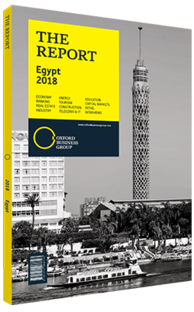Egyptian authorities confident in the Suez Canal's potential
Despite a difficult global environment, the authorities are forging ahead with plans to further develop the Suez Canal, and place it at the centre of the country’s economic growth and employment creation.
In August 2015 the government inaugurated the Suez Canal expansion. The project, which cost $8.6bn, was completed in record time and now allows for two-way traffic along the entire length of the waterway. Given the reduction in waiting times and the potential concomitant cost savings, the government projected that the extension would lead to $13bn growth in annual canal revenues per year by 2023.
Impact Of Global Conditions
While some questioned the feasibility of such figures, the government has remained committed to the idea of building economic, industrial and logistical growth around the canal. However, in the short term at least, the grand ambitions for the canal have not yet come to fruition. Indeed, while the government is looking at a number of options for bolstering canal revenues, like all shipping lanes, it remains vulnerable to global conditions. In November 2016 revenue from the canal reached a 21-month low, and income from canal tolls fell by 4.7% year-on-year (y-o-y) to $389.2m. Furthermore, this fall in revenue came on the back of a 7% drop in October to $418.1m.
The competitiveness of the canal has been hit by a number of factors, including subdued global trade. However, the leading challenge is the lower oil price, which has prompted shippers to use the longer, cheaper route around the Cape of Good Hope to service the US-to-Asia route, bypassing the Suez Canal and its toll. The average toll per trip through the canal for all vessels stood at $285,000 in November 2016.
Given the cost savings for shippers of using the longer route, the number of vessels transiting the canal inevitably declined. In 2016 the vessel count through the canal fell by 4% to 16,800. The decline continued into January and February 2017 and occurred in most vessel categories, ranging from containers to bulkers.
Nevertheless, the government has been proactive in addressing the issue and has been offering a variety of discounts to shippers. In August 2016 the Suez Canal Authority (SCA) introduced a rebate on tolls for container ships travelling from the eastern US to South and South-east Asia. This was followed in April 2017 by rebates of 40% for laden dry-bulk vessels travelling from South Africa to the Mediterranean and Black Sea, and 75% for laden bulk vessels coming from east and south Australia to north-west Europe. These rebates were in place until the end of 2017. The initial impact of these policies appears positive. There were small increases in vessel traffic through the Suez Canal in the first nine months of 2017, when earnings increased by 2.2% y-o-y to $3.86bn. The number of ships was up by 2.5%, while tonnage carried grew by 4.6%.
A New Model
While this is good news, the government still has a long way to go to make up for the shortfall in canal revenue. One proposal to offset the shortage in revenues is to introduce upfront payments for canal transit. Under the proposed scheme, major shippers would be offered significant discounts for upfront, bulk payments to use the canal. Mohab Mamish, then-chairman of the SCA, told international media in October 2016 that this could include charges levied three to five years in advance for a 3% discount. However, there has been little progress in this regard, and there appears to be little appetite among major shipping companies to adopt such a model, given the already substantial challenge of managing risk.
Nonetheless, the government remains optimistic about the long-term potential of the canal. In July 2017 Sahar Nasr, the minister of investment and international cooperation, said the government aims to attract $30bn in foreign direct investment by 2022 for infrastructure and logistics hubs along the canal, demonstrating that the authorities are holding firm to the vision of the canal as a centre of industrialisation and trade that will drive the country forward in the coming decades.
You have reached the limit of premium articles you can view for free.
Choose from the options below to purchase print or digital editions of our Reports. You can also purchase a website subscription giving you unlimited access to all of our Reports online for 12 months.
If you have already purchased this Report or have a website subscription, please login to continue.

